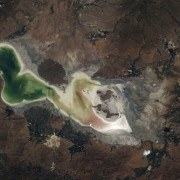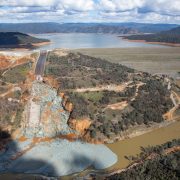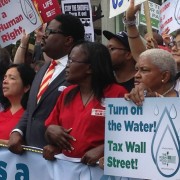The Crash of the Growth Wave Forces Cities and Towns to Raise Water Rates
The exurbs of Minnesota’s Twin Cities are the latest examples of the boom and bust cycle.
At a glance, New Prague, Minnesota, a town of 7,000 an hour’s drive south of Minneapolis, seems to have little in common with Las Vegas, a sin-stays-here gambling and entertainment oasis in the Mojave desert.
What binds them is water infrastructure and the go-go years of the last decade. Both places planned to use revenue from a growing base of ratepayers to cover the cost of the big-ticket water facilities they were building.
But when that growth stopped, it blew a hole in revenue projections. In many cases, substantial rate increases filled the gap.
The Minneapolis Star Tribune reported this week that New Prague’s white elephant is a recently completed US$30 million wastewater treatment plant. Michael Johnson, the city administrator, told the Tribune that New Prague had to raise its rates by 35 percent in 2009, 31 percent in 2010 and 25 percent in 2011 and 2012. In total, rates have nearly tripled in just four years.
“The best available data at the time this plant was being planned had everything going onward and upward,” Johnson told the newspaper. “Then, everything changed. If we had that great knowledge, we might have done things differently. But we didn’t.”
The city is looking for ways to lower monthly payments by extending the term of its loan, but that will add millions to the final tally.
In Las Vegas, the problem is the fees paid by new houses to connection to the water system. The connection charges brought in US$185 million in 2006. Four years later, with housing starts dormant, the water authority collected just US$3.2 million.
To keep on firm financial footing during construction of a US$800 million intake pipe into Lake Mead, the Southern Nevada Water Authority voted this year to levy a US$5 per month charge on its customers.
These growth-based revenue shocks come at a time when utilities are being buffeted by more systematic changes. Americans, because of efficient appliances, thrift, and successful conservation campaigns, are using less water. Per capita consumption is falling across the board, and some cities have seen overall demand flatten or even decline in the last two decades. In Seattle, where I live, consumption dropped by 30 percent since 1990, despite a 15-percent increase in population.
All of which means that utilities, which used to be in the business of selling water, have to reconsider their financial models. Some have started to increase their fixed charges, which are paid regardless of consumption, a trend I identified in Circle of Blue’s 2012 update on water prices in the U.S.
So cities and utilities have a fine line to walk in the coming years: what is the best way pay for what they’ve already bought and to pay for future repairs and upgrades while fiddling with revenue sources and still ensuring that the poorest residents have access to affordable water?
Brett Walton
Circle of Blue reporter
Brett writes about agriculture, energy, infrastructure, and the politics and economics of water in the United States. He also writes the Federal Water Tap, Circle of Blue’s weekly digest of U.S. government water news. He is the winner of two Society of Environmental Journalists reporting awards, one of the top honors in American environmental journalism: first place for explanatory reporting for a series on septic system pollution in the United States(2016) and third place for beat reporting in a small market (2014). He received the Sierra Club’s Distinguished Service Award in 2018. Brett lives in Seattle, where he hikes the mountains and bakes pies. Contact Brett Walton








Leave a Reply
Want to join the discussion?Feel free to contribute!